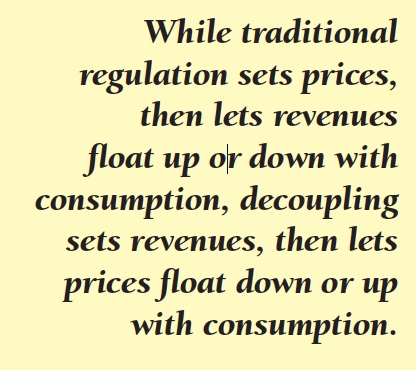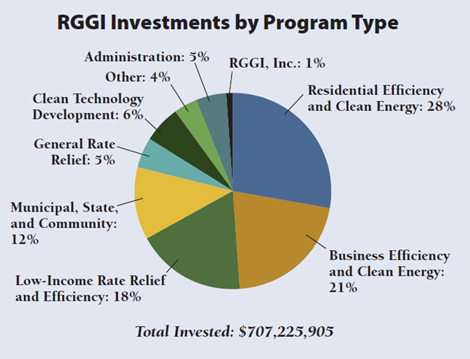
Knowledge Center
We believe that sharing our expertise and collaborations in clean energy policy is how real, effective change happens.
From reports and policy briefs, to webinars and podcasts—RAP advisors have built an extensive collection of resources providing in-depth analysis and practical solutions to today’s energy challenges.
Filter >>
Content Filter:
The EU’s energy infrastructure faces numerous challenges over the next decades. It needs to be decarbonized whilst ensuring the competitiveness of EU industry, providing energy security, addressing energy poverty, reducing energy bills, and empowering consumers, who play a crucial part… View Summary +

Under traditional regulation, utilities make more money when they sell more energy. Yet this reality is at odds with explicit public policy objectives that utility and environmental regulators are charged with achieving, including economic efficiency and environmental protection. Many utility-sector… View Summary +

Many states have adopted utility decoupling, or revenue regulation, which breaks the link between electricity sales and revenues to the utility. Originally, it was conceived as a way to make utilities indifferent to annual sales volumes by addressing the net… View Summary +
In this webinar, Keith Dennis of the National Rural Electric Cooperative Association (NRECA), along with Ken Colburn and Jim Lazar of RAP, explore environmentally beneficial electrification—the electrification of energy end uses, such as space heating, water heating, and transportation. With… View Summary +
In a webinar for the Utah Public Service Commission, Jim Lazar, John Shenot, and Richard Sedano explore the intricacies of time-of-use rates. View Summary +
As China moves through the process of testing approaches and implementing a national program for regulating carbon emissions, lessons from similar programs elsewhere in the world may prove useful. In particular, such a program requires a robust review… View Summary +

Stabilne i niezawodne dostawy energii elektrycznej są priorytetem i fundamentem bezpieczeństwa energetycznego państwa, choć nie mogą stanowić nadmiernego obciążenia kosztowego dla odbiorców końcowych. Z jednej strony istotne jest utrzymanie niskich cen energii elektrycznej, ponieważ są motorem rozwoju gospodarczego oraz dają… View Summary +
Energieeffizienz ist ein essenzieller Baustein für eine kosteneffiziente Transformation und Dekarbonisierung des Energiesystems im Rahmen der Energiewende. In regulierten Energiemärkten beziehungsweise gegenüber regulierten (und integrierten) Unternehmen lassen sich dabei die Gesamtkosten des Systems relativ einfach als Zielgröße für die Energieeffizienzmaßnahmen… View Summary +
Energy markets are often said to suffer from a “missing money” problem. While the analysis behind these claims is often muddled, there can be legitimate concerns about whether energy markets are adequately remunerating needed investment. In this RAP webinar presentation,… View Summary +
中国弃风弃光问题日益严重,亟待加以解决。其根本原因在于电网调峰能力不足,而限制电网调峰能力的关键因素是目前实行的单一电量固定标杆电价机制,引入容量电价是提高电网调峰能力的有效措施 。中国目前仅针对抽水蓄能电站和部分地区的天然气发电电站实行容量电价,应该将该机制扩展到燃煤电厂,同时容量电价水平应该通过市场拍卖竞价的方式产生。这就要求首先实行经济调度机制改革,同时调度中心应该透明公开,另外容量电价应该在终端消费电价中加以体现。… View Summary +
Immer mehr Verbraucher überlegen, ob eine Eigenversorgung mit Solarstrom für sie günstiger ist als der Strombezug aus dem Netz. Mithilfe von Speichern lässt sich sogar ein noch höherer Anteil des selbst erzeugten Stroms zu Hause verbrauchen—direkt oder indirekt, für Strom-… View Summary +
If the challenges of energy decarbonisation are to be met in a cost-effective, affordable, and reliable fashion, customers will need to increasingly engage with the electricity market. Likewise, as the share of intermittent renewable resources continues to grow, the need… View Summary +
The last 18 months have seen a lot of change in the policy landscape affecting carbon emissions from buildings in the UK. The trajectory to zero carbon new build has been ‘paused’; government support for Green Deal finance was withdrawn… View Summary +
![Government emissions abatement shortfall compared to 5th Carbon Budget trajectory in 2030 [MtCO2e]](https://www.raponline.org/wp-content/uploads/2023/09/abatement-gap-buildings-5th-carbon-budget.jpg)
In a RAP webinar held on September 22, 2016, Jim Lazar of RAP and Dr. Thomas Vitolo of Synapse Energy Economics delve into questions surrounding the value of solar, including an examination of the relative merits of various… View Summary +
In this webinar presentation, Edith Bayer and Eoin Lees discuss key elements of energy efficiency obligation (EEO) schemes. These include, considerations for designing, implementing, and (over time) improving EEOs; best practices in successful EEO schemes; and strategies for overcoming common barriers to… View Summary +

